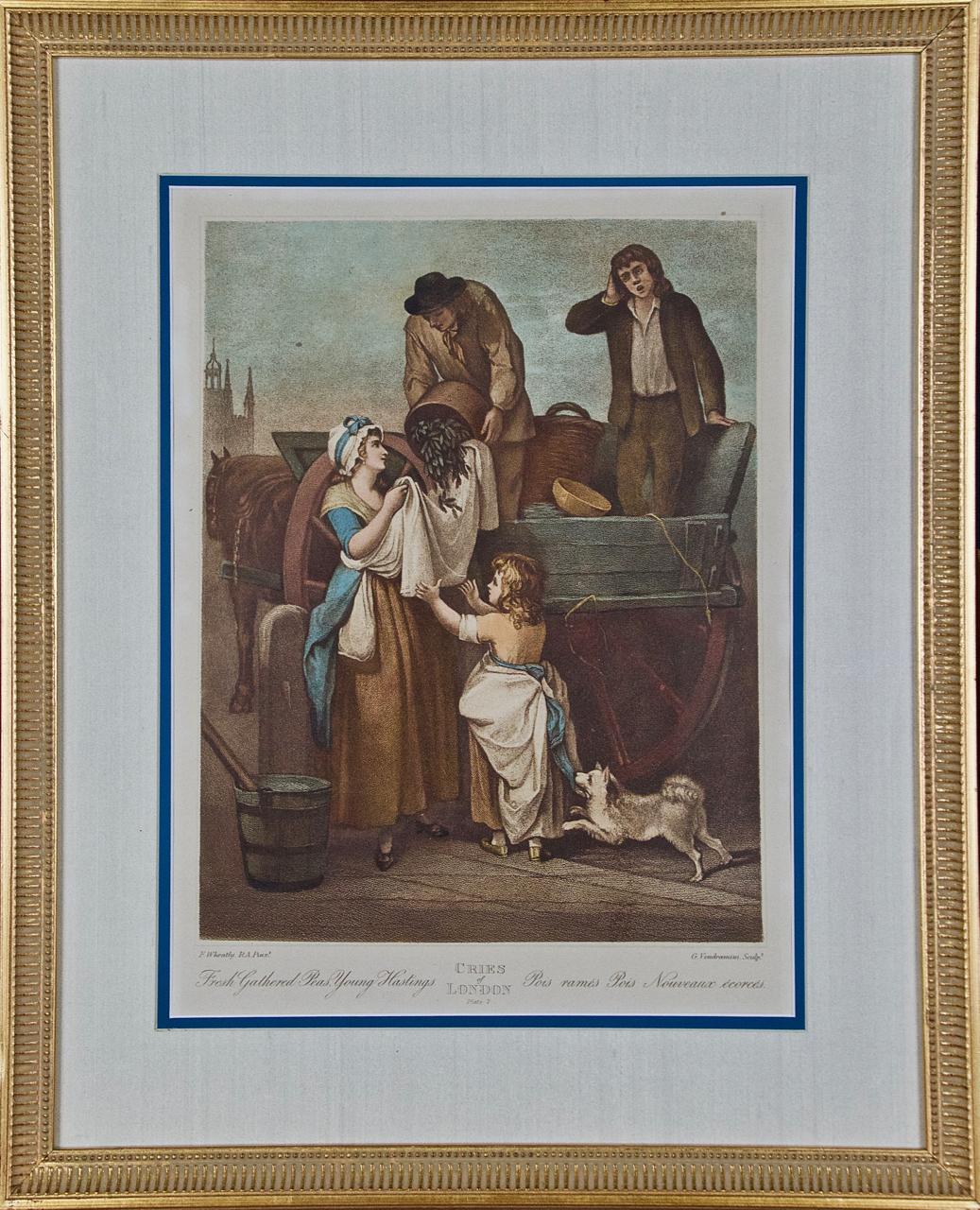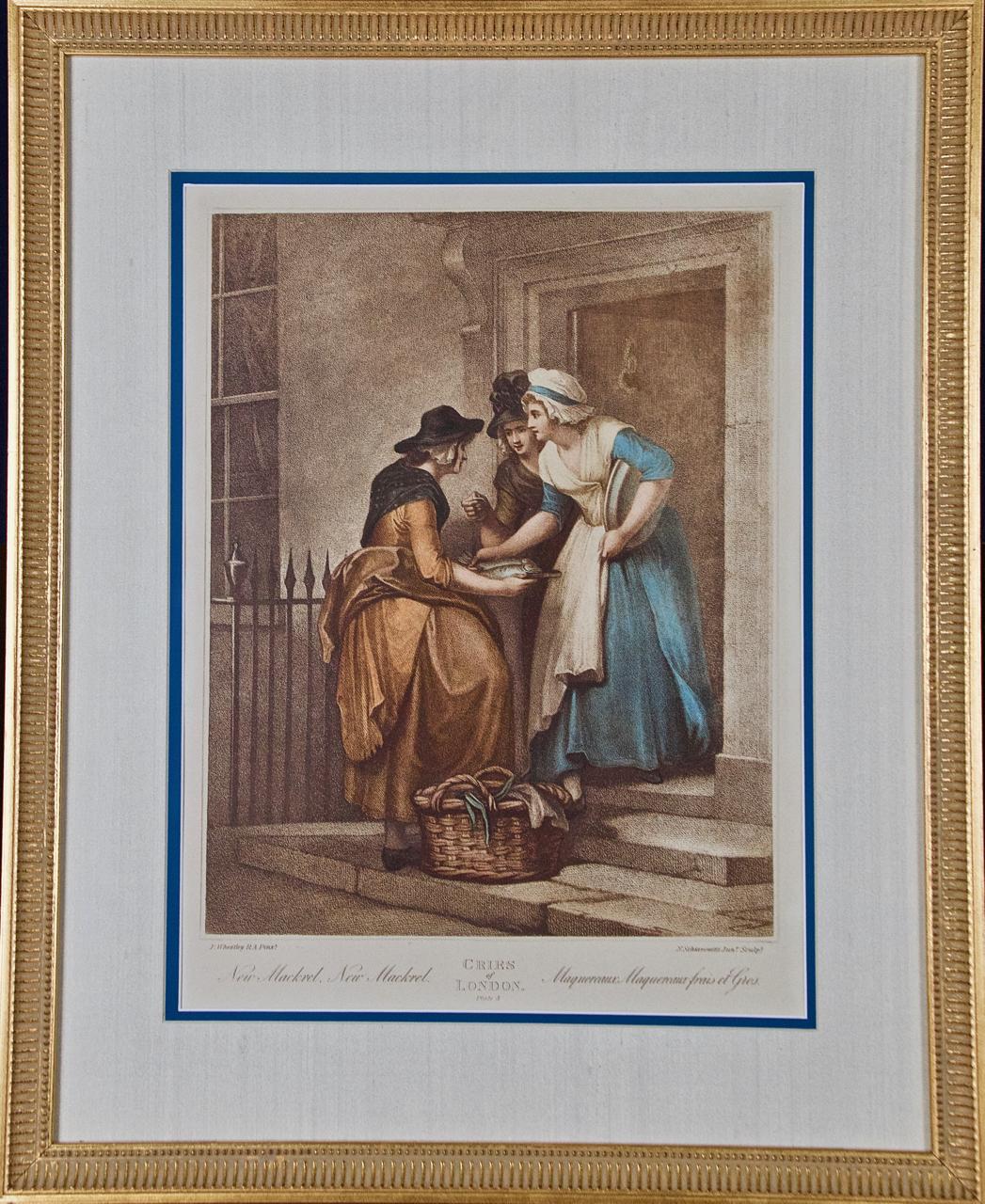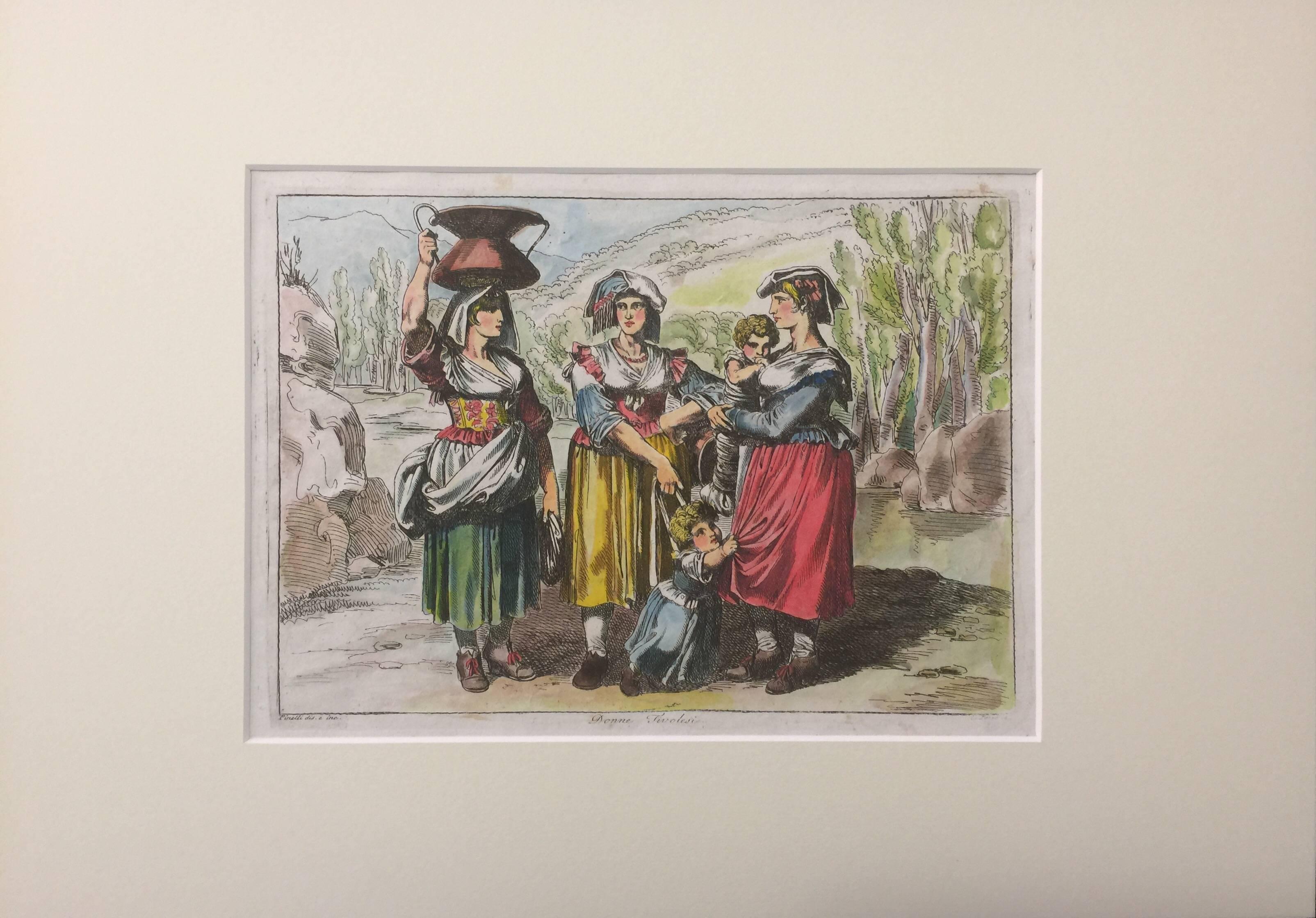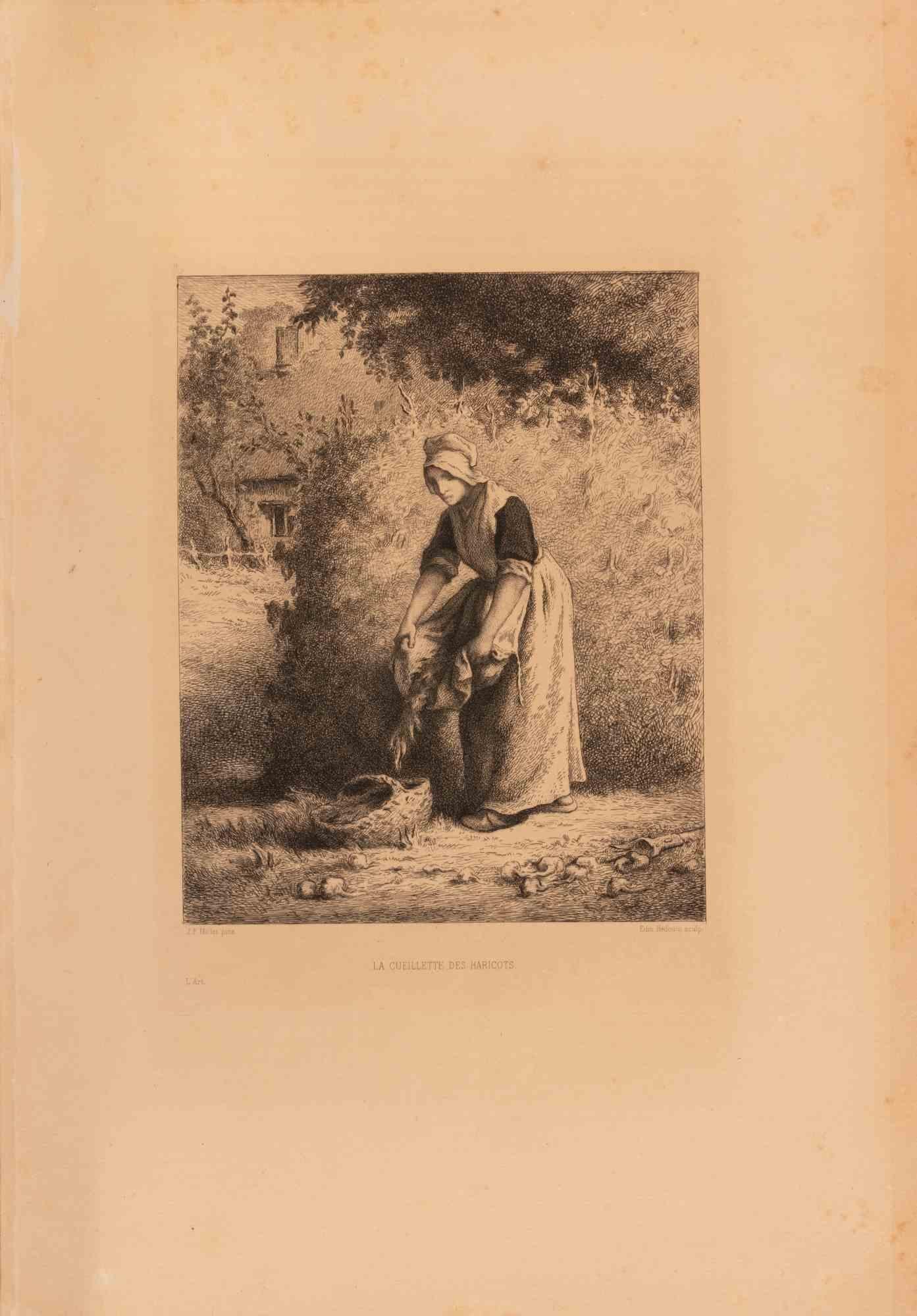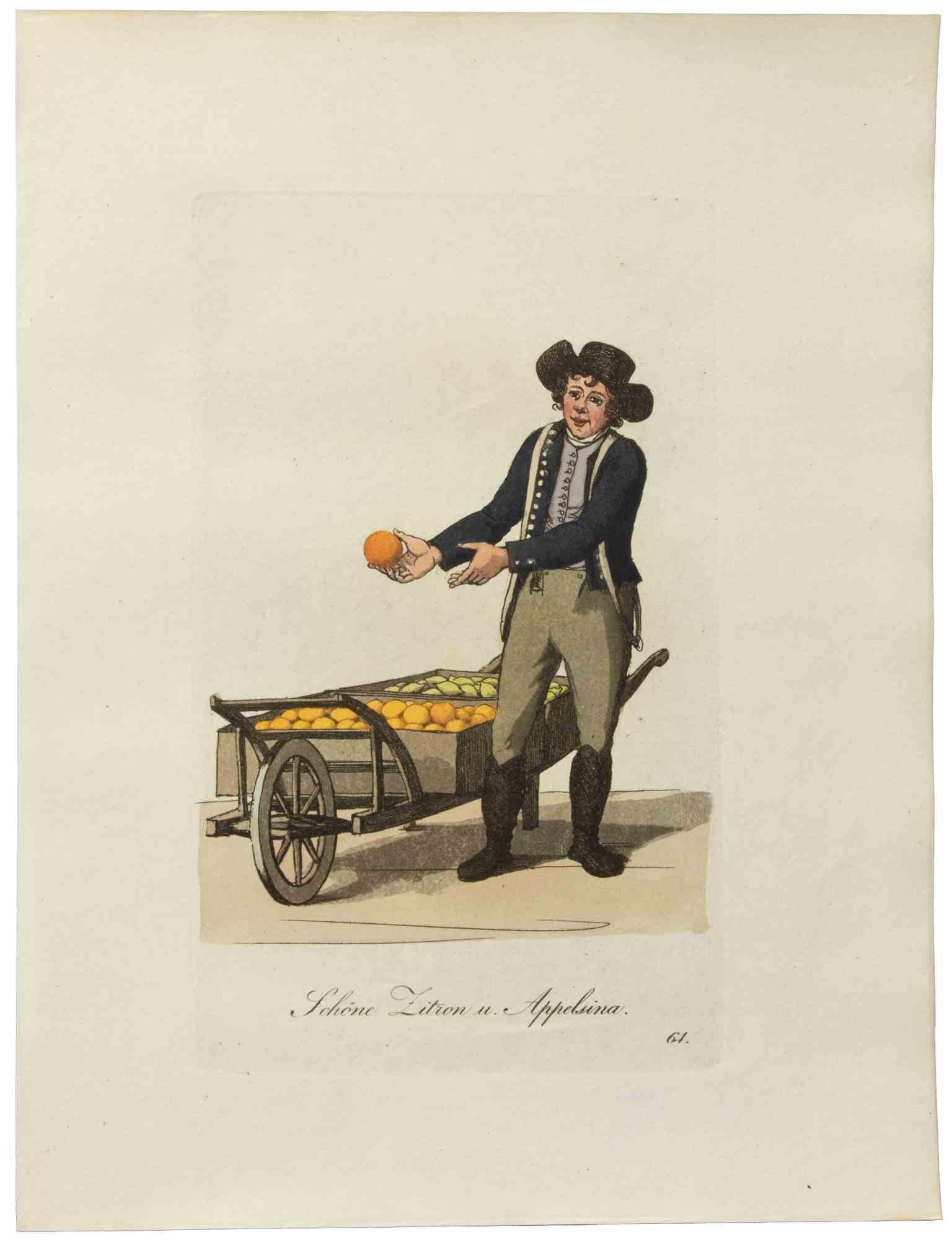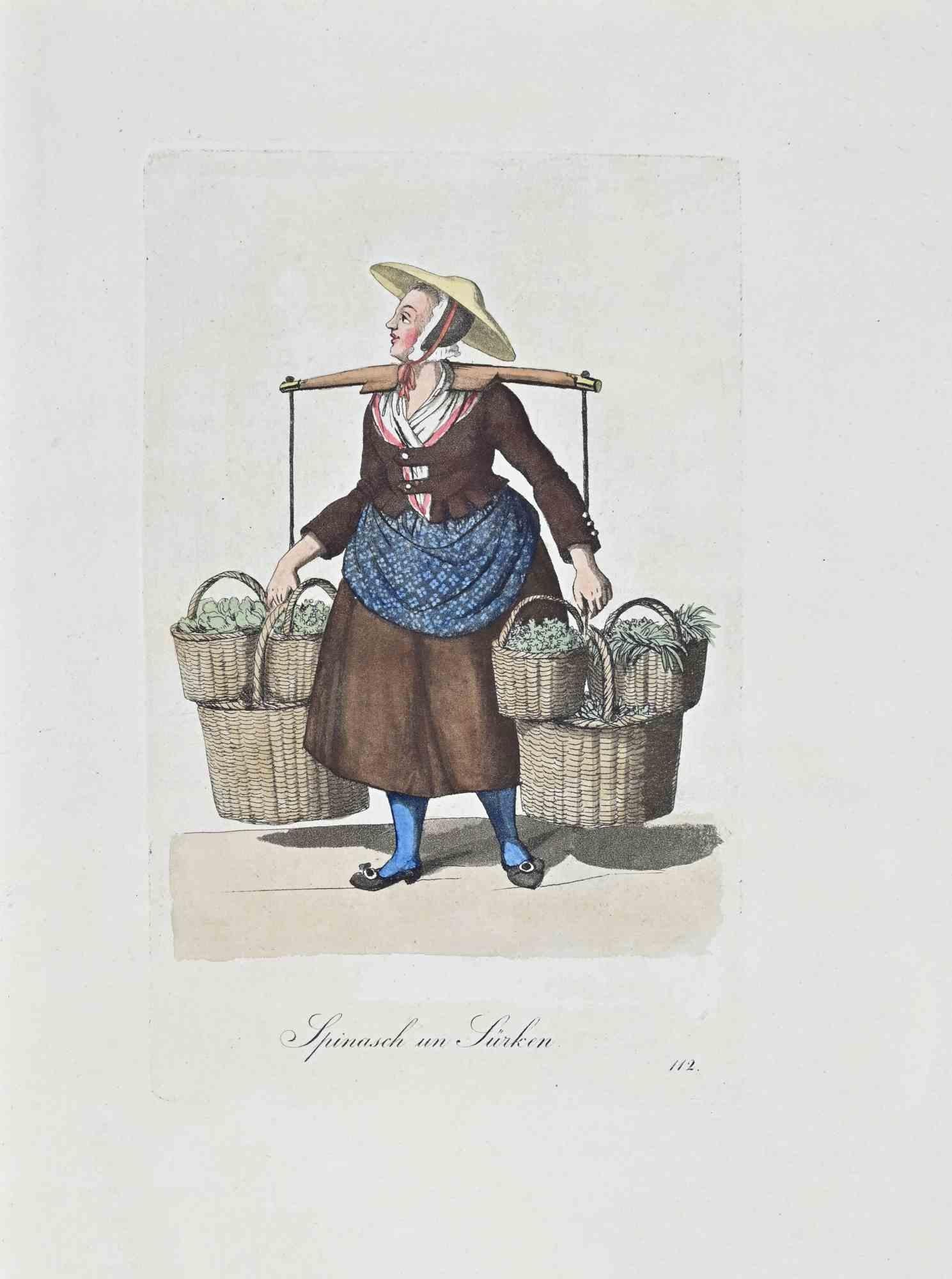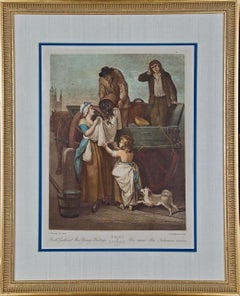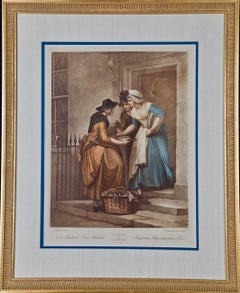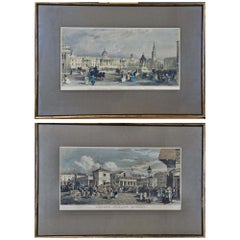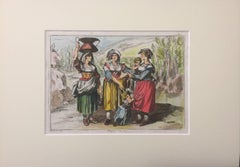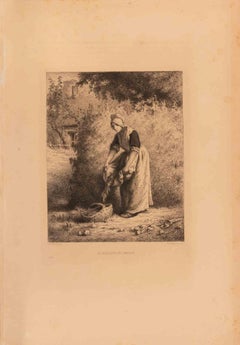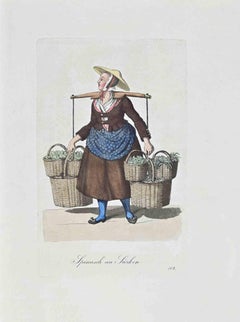Items Similar to An Engraving from the Series 'The Cries of London': "Turnips & Carrots"
Want more images or videos?
Request additional images or videos from the seller
1 of 8
Francis WheatleyAn Engraving from the Series 'The Cries of London': "Turnips & Carrots"1797
1797
$460
$57520% Off
£358.13
£447.6620% Off
€407.25
€509.0720% Off
CA$661.35
CA$826.6920% Off
A$726.29
A$907.8620% Off
CHF 379.28
CHF 474.1020% Off
MX$8,668.57
MX$10,835.7120% Off
NOK 4,805.14
NOK 6,006.4320% Off
SEK 4,478.58
SEK 5,598.2320% Off
DKK 3,041.66
DKK 3,802.0720% Off
About the Item
A beautifully framed hand-colored engraving from the famous "Cries of London" series, depicting the lives and professions of the common people of 18th century London, who worked the streets, hawking their wares. This engraving from the series "Cries of London", originally painted by Francis Wheatley, was published by Colnaghi & Co. in London. It is entitled: "Turnips & Carrots, Carottes & Navets", Plate No. 13, engraved by Thomas Gaugain, published in 1797.
"Turnips & Carrots" depicts a woman on the right who is holding a bunch of turnips standing next to a donkey loaded with baskets of turnips and carrots. A boy stands to the donkey's right (on the left of the scene) and London buildings are present on the right and in the background.
This engraving is presented in a decorative gold-colored wood frame. The frame measures 20.5" x 16.38" x .88". There is moderate discoloration in the margins of "Turnips and Carrots", particularly in the right lower corner. It is otherwise in very good condition.
There are six additional framed engravings from the 'Cries of London' series available on 1stdibs that are presented in similar or identical frames. The reference numbers for the additional 'Cries of London' listings are: LU117326068762, LU117326068772, LU117326068782, LU117326015272, LU117326068802 and LU117326068812. These would make for an attractive and interesting display grouping of two, three or more prints. Additional discounts are available for purchase of a set, with a greater percentage price reduction offered for higher volume.
Although there were versions of the "Cries of London" created for centuries, the most well known and popular was this series, created by Francis Wheatley. Wheatley exhibited his 14 paintings of the "Cries" at the Royal Academy between 1792 and 1795. The publishing company Colnaghi & Co. were impressed by his work and agreed to publish a series of engravings after Wheatley's famous paintings. Thirteen of the fourteen paintings were engraved with a stipple technique by some the most noted engravers in England, including: Niccolo Schiavonetti, Giovanni Vendramini and Thomas Gaugain. These colorful prints give a glimpse of 18th century London's commoners, the peddlers, charlatans, street hawkers, milkmaids, and grocers who made their living on the city streets. They advertised their wares with musical shouts or melodic rhymes, which were a constant part of the sights and sounds of the city at that time. Wheatley grew up in Covent Garden among the hawkers with their cries echoing in the streets around the market. The old stone pillars of the market buildings still stand today. Wheatley's wife was also a painter and exhibited at the Royal Academy. She served as the model for the women in several of the scenes.
Two years before Wheatley exhibited his paintings at the Royal Academy, the forty-one year old painter had been elected to the Royal Academy over the King’s nominee. The king was upset at this and made sure that Wheatley never again received another of his or his nobles' commissions. The portraits of nobles had previously been Wheatley's main source of income. Ironically, what should have been the crowning glory of his career, instead turned out to be its ruin. Wheatley was declared insolvent in 1793 and struggled to make a living until his death in 1801, when the Royal Academy paid his funeral expenses. Yet in the midst of this turmoil, Wheatley managed to create these wonderful images of street sellers. Although they were seen at the time as of little consequence compared to his aristocratic portraits, are now the works that define his lasting reputation. His “Cries of London” series is considered by many as the most beautiful and most popular prints ever created on this subject.
- Creator:Francis Wheatley (1747 - 1801, British)
- Creation Year:1797
- Dimensions:Height: 20.5 in (52.07 cm)Width: 16.38 in (41.61 cm)Depth: 0.88 in (2.24 cm)
- Medium:
- Movement & Style:
- Period:
- Condition:
- Gallery Location:Alamo, CA
- Reference Number:Seller: # 26791stDibs: LU117326068742
About the Seller
5.0
Platinum Seller
Premium sellers with a 4.7+ rating and 24-hour response times
Established in 2011
1stDibs seller since 2019
297 sales on 1stDibs
Typical response time: 1 hour
- ShippingRetrieving quote...Shipping from: Alamo, CA
- Return Policy
More From This Seller
View AllFresh Gathered Peas: An 18th C. Engraving From the Series 'The Cries of London'
By Francis Wheatley
Located in Alamo, CA
This is a beautifully framed engraving, printed in colors with additional hand coloring, from the famous "Cries of London" series, depicting the lives and professions of the common p...
Category
Late 18th Century Naturalistic Figurative Prints
Materials
Engraving
"New Mackrel": An Engraving From the 18th Century Series 'The Cries of London'
By Francis Wheatley
Located in Alamo, CA
This is a beautifully framed engraving, printed in colors with additional hand coloring, from the famous "Cries of London" series, depicting the lives and professions of the common p...
Category
Late 18th Century Naturalistic Figurative Prints
Materials
Engraving
Views of London: A Pair of Framed 19th Century Engravings by Havell and Allom
Located in Alamo, CA
This is a pair of framed hand-colored prints, both utilizing engraving and etching techniques, depicting two London architectural landmarks: "The National Gallery, Charing Cross" and "Covent Garden Market" from the Stationers' Almanac, published in London by J. Robins & Sons in the early 19th century. Both of these prints show vibrant London street scenes with markets, carriages, common people as well as the wealthy in the foreground of "Covent Garden Market" and wealthy well dressed people, carriages, a begger, street merchants, as well as uniformed military on horseback in the foreground of "The National Gallery". "The National Gallery, Charing Cross" was created by James Sands from a painting by Thomas Allom (1804-1872), published in 1836. "Covent Garden Market" was created by Frederick James Havell (1801–1840/41) after a painting by William Havell...
Category
Mid-19th Century Naturalistic Landscape Prints
Materials
Engraving, Etching
"Scene _ Country Fair": A Framed Early 19th Century Engraving by George Hunt
By George Hunt
Located in Alamo, CA
This is a framed colored engraving entitled "Scene _ Country Fair" by George Hunt, published in London in 1825. It depicts a gathering of people at an early 19th century county fair, presumably in England. A majority of the crowd are turned away, watching a performance on a stage in the background. In the foreground a man is in conversation with a couple. The man wears a top hat and the woman is holding a baby. They are dressed in the typical attire of the middle class at that time.
The engraving is presented in a brown wood frame and a double mat, with a cream-colored outer mat and a light cranberry...
Category
Early 19th Century Landscape Prints
Materials
Engraving
Four Framed Hogarth Engravings "Four Times of the Day"
By William Hogarth
Located in Alamo, CA
The four plates in this "Four Times of the Day" set were created utilizing both engraving and etching techniques by William Hogarth in 1738. Hogarth's original copper plates were refurbished where needed by James Heath and these engravings were republished in London in 1822 by Braddock, Cradock & Joy. This was the last time Hogarth's original copper plates were used for printing. Most were melted down during World War I for the construction of bombs. Printed upon early nineteenth century wove paper and with large, full margins as published by William Heath in 1822. The inscription below each print reads "Invented Painted & Engraved by Wm. Hogarth & Publish'd March 25. 1738 according to Act of Parliament".
These large folio sized "Four Times of the Day" engravings/etchings are presented in complex gold-colored wood frames with black bands and scalloped gold inner trim. A majority of each thick impressive frame is covered with glass applied near the outer edge. Each frame measures 25.75" high, 22.25" wide and 1.88" deep. There are a few small dents in the edge of these frames, which are otherwise in very good condition. "Morning" has two focal areas of discoloration in the upper margin and some discoloration in the right margin, a short tear in the left margin and a short tear or crease in the right margin. "Noon" has a spot in the upper margin that extends into the upper image, but it is otherwise in very good condition. "Evening" has a faint spot in the upper margin, but it is otherwise in very good condition. "Night" is in excellent condition.
The "Four Times of the Day" series is in the collection of many major museums, including: The British Museum, The Metropolitan Museum of Art, The Tate Museum, The Chicago Art Institute and The Victoria and Albert Museum.
Through this series Hogarth is portraying early 18th century London street life at "Four Times of the Day". His characters are exhibiting their personalities, quircks, strange activities, but he also wants to draw attention the disparities between the wealthy aristocracy and the common working class.
Plate 1, "Morning" depicts morning in Covent Garden in the winter in front of Tom King...
Category
Mid-18th Century Old Masters Landscape Prints
Materials
Engraving, Etching
$5,420 Sale Price
20% Off
William Hogarth's "Analysis of Beauty": A Set of Two Framed 18th C. Engravings
By William Hogarth
Located in Alamo, CA
The two plates in this set were created utilizing both engraving and etching techniques by William Hogarth in 1753, originally as illustrations of his book on aesthetics, entitled "Analysis of Beauty". Due to their popularity, these plates were later published separately. The publication line in the lower right reads: "Designed, Engraved, and Publish'd by Wm. Hogarth, March 5th 1753, according to Act of Parliament." Hogarth's original copper plates were refurbished where needed by James Heath and engravings were republished in London in 1822 by Braddock, Cradock & Joy. This was the last time Hogarth's copper plates were used for printing. Most were melted during World War I for the construction of bombs.
These large folio sized "Analysis of Beauty" engravings are presented in antiqued gold-colored frames with double mats; the outer silk mats are light brown-colored and the inner mats are dark brown. Each frame measures 27.38" x 31.25" x 1.13". There is one tiny spot in the right margin of plate 1 and another in the lower margin; the latter could be from the printing process. The prints are otherwise in excellent condition.
The "Analysis of Beauty" series is in the collection of many major museums, including: The British Museum, The Metropolitan Museum of Art, The Tate Museum, The Chicago Art Institute and The Fine Arts Museums of San Francisco.
The first engraving (Plate 1) depicts a courtyard of statues which is filled with some of the most famous works of classical sculpture. The most important sculptures are surrounded by less impressive works. The Medicean Venus (#13) is in the center with a statue of Julius Caesar (#19) to the right, elevated on a pulley with a short, overdressed Brutus stands over the falling Caesar. The Apollo Belvedere (#12) is next. A judge stands to the right with his foot on a cherub (#16). Another crying cherub holds a gallows and wipes his tears with the judge's robe.
A sphinx (#21) and the drunken Silenus (#107) are below the Venus. Michaelangelo's torso (#54) and a statue of Antonius (#6) are seen in the foreground. The Farnese Hercules (#3) and a bust of another Hercules (#4) under two statuettes of Isis are also included in the scene.
The key to these objects is included in the form of a serpentine line winding around a cone (#26), Hogarth's "Line of Beauty". For Hogarth the winding line is an essential element of beauty in art. Hogarth's theory of beauty is communicated in this plate.
Plate 2 is thought to represent the Wanstead Assembly, with the Earl of Tynley and his household. It is an adaptation of a scene in the Happy Marriage series, which complements Hogarth's Marriage à la Mode...
Category
Mid-18th Century Old Masters Interior Prints
Materials
Engraving, Etching
You May Also Like
Donne Tirolesi - Etching - 1809
By Bartolomeo Pinelli
Located in Roma, IT
Beautiful etching enriched by watercolor technique.
Passepartout included : 49 x 34 cm
Image Dimensions : 19 x 27 cm
This artwork is shipped from Italy. Under existing legislation, ...
Category
Early 1800s Realist Figurative Prints
Materials
Etching
La Cueillette des Haricots - Etching by Edmon Hedouin - Mid 19th Century
Located in Roma, IT
Etching on paper, realized by Edmon Hedouin after Jean-François Millet.
This delicate etching by the French artist Edmond Hedouin is based on an original composition by Jean-Françoi...
Category
Mid-19th Century Modern Figurative Prints
Materials
Etching
Schone Zitrone u Appelsina - Etching by Christoph Suhr - 1808
Located in Roma, IT
Etching hand colored realized by Christoph Suhr in 1808.
Belogs to the Series "Der Ausruf in Hamburg vorgestellt in ein hundert und zwanzig colorirten Blättern".
Beautiful engravin...
Category
Mid-19th Century Modern Figurative Prints
Materials
Etching
Spinasch un Sürken - Etching by Christoph Suhr - 1808
Located in Roma, IT
Spinasch un Sürken is an artwork, realized by Christoph Suhr in 1808.
Etching hand colored. Titled on the lower margin.
The artwork belongs to the Series "Der Ausruf in Hamburg vor...
Category
Early 1800s Modern Figurative Prints
Materials
Etching
After Carington Bowles - 18th Century Engraving, The Prodigal Son Returns
Located in Corsham, GB
A charming engraving depicting the parable of the Prodigal Son in the Bible, found in Luke 15:11-32, after the original painting by Carington Bowles. Inscribed in plate. Presented in...
Category
Early 18th Century Figurative Prints
Materials
Engraving
Grandma - Lithograph after Nicolas Toussaint Charlet- Early 19th century
Located in Roma, IT
The Grandma tells her grandchildren a tale is an original artwork realized by Nicolas Toussaint Charlet (1792-1845). Lithograph print. Signed in plat...
Category
Mid-19th Century Modern Figurative Prints
Materials
Lithograph
More Ways To Browse
Antique Engravings London
Portrait Of Noble
Stone Pillar
Muro Print
Mystery Of Sleep Dali
Nadia Comaneci
Nature Woodblock
Norman Hirst
Norman Rockwell Clock
Norman Rockwell Tom Sawyer
Nude Flask
Nude With Garter Dali
Odilon Redon On Sale
Oli Epp
Original Etching Roman Emperor
Ota Masamitsu
Oyvind Fahlstrom On Sale
Pablo Picasso Signed Aquatint
